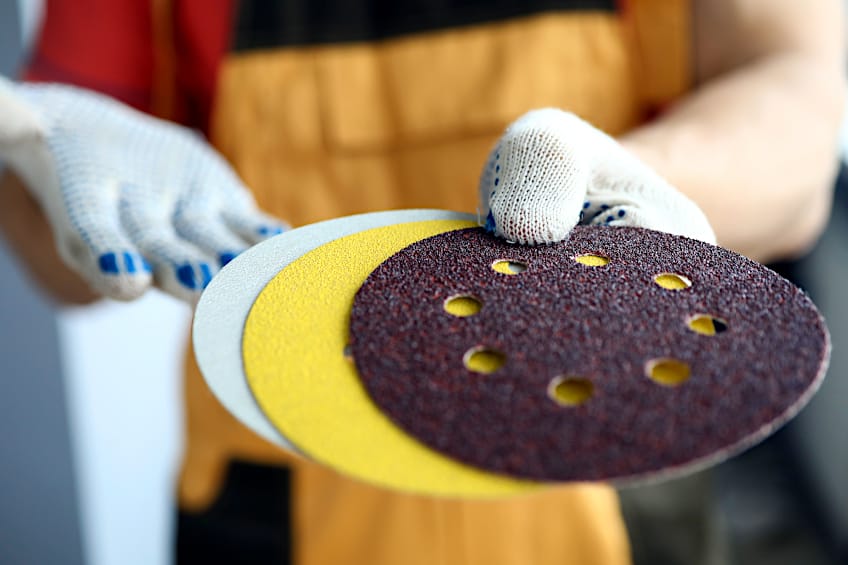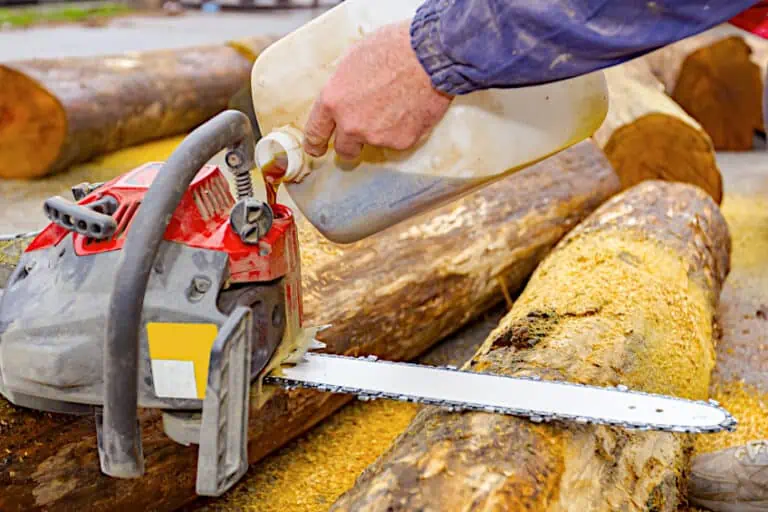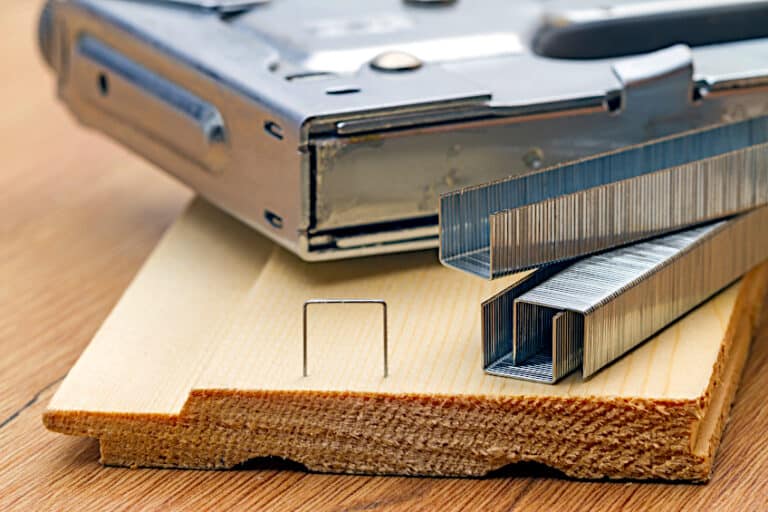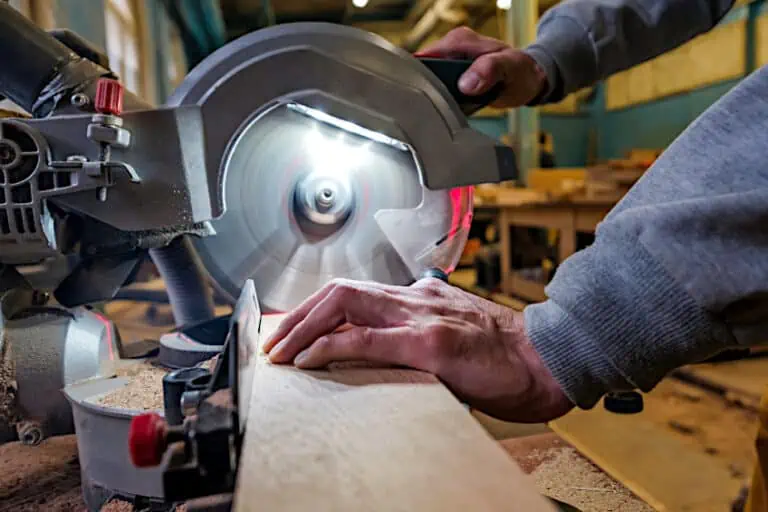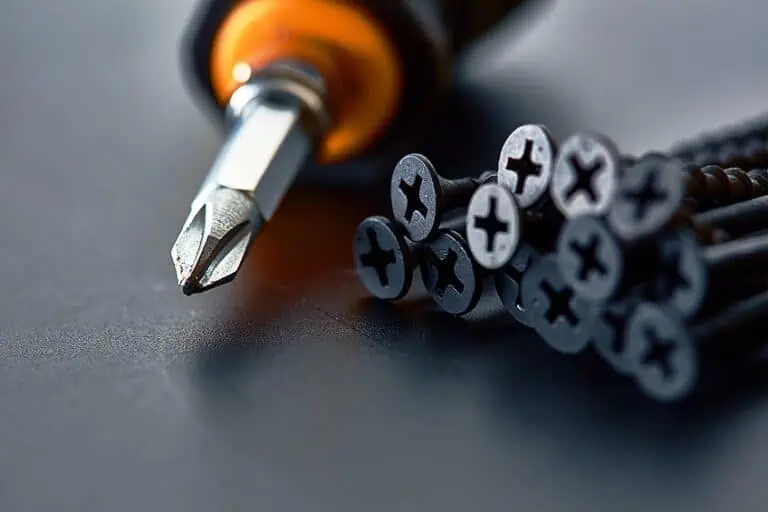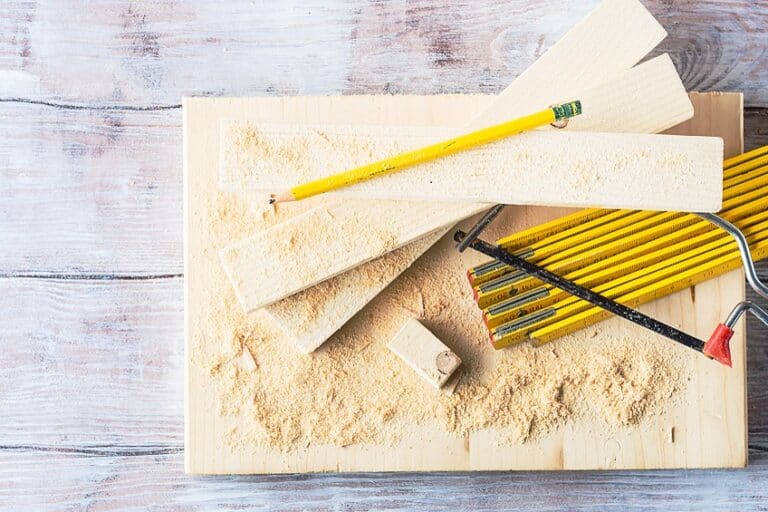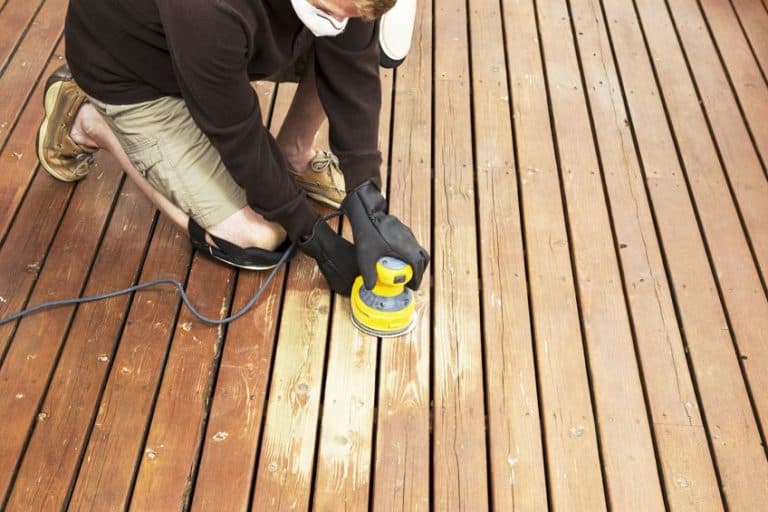What Grit Sandpaper to Use for Wood – Abrasive Types Guide
Regardless of what type of woodworking you are into, at some point, you’re going to have to sand the surface of your workpiece. It is something of a cornerstone of wood crafting as a whole. After all, the surface of naturally grown wood has been conditioned to protect it from the elements, predators, mold, and insect infestation. Therefore, sanding is an essential aspect of the wood crafting process, but choosing the right sandpaper for your wooden workpiece can be confusing. Since there are many different grits and even different tools to choose from, we thought we’d show you which sandpaper to use in order to achieve a certain finish, and which are appropriate for certain situations.
Why Is It Important to Sand the Surface of Your Workpiece?
Sanding the surface of your workpiece is a necessity across almost every woodworking discipline. Why, though? After all, sanding your workpiece simply roughs up the surface of the wood. This is where understanding the properties of wood comes into play. As a naturally occurring material, trees condition their wood to ensure that their trunks, nutrients, and even their roots, are protected.
Wooden surfaces naturally become conditioned through their exposure to the immediate environment in order to prevent things like water, insects, and mold from entering the wood’s pores. Due to this external “shell”, applying things like paint, wood treatment oils, and varnish can prove to be rather difficult without removing this layer first.
How do you remove this layer? By sanding it! This is essentially all sanding your surface does aside from making your workpiece smooth and flush. Other surfaces require sanding for practically the same reason, but wood in particular almost always needs to be sanded to ensure that the finish you apply afterward is well received and evenly distributed among the wood’s internal fibers.
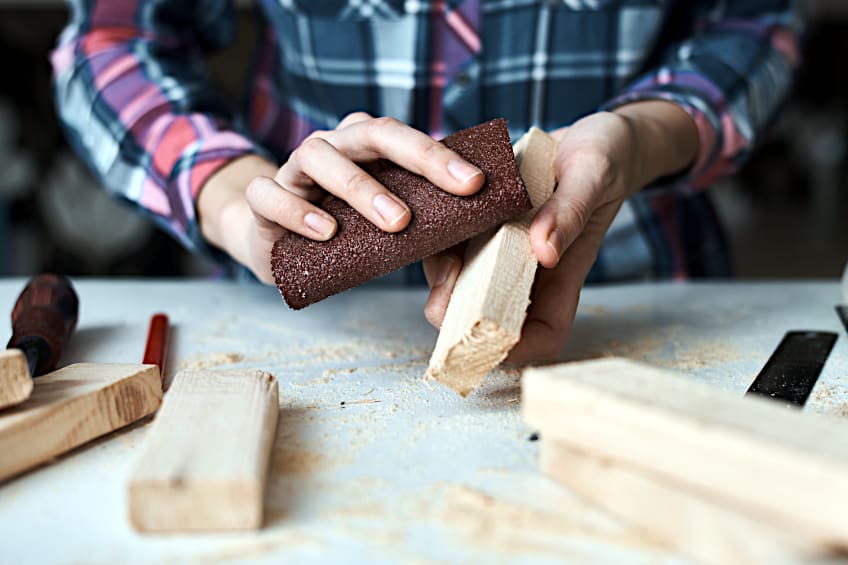
Sanding is a simple solution to what could turn into a major problem, which is why almost every woodworking and/or wood crafting tutorial out there will list sanding as the preparation process. Using sandpaper isn’t the only option when you need to resurface wood board though, as things like power sanders and liquid sandpaper exist too.
If you’d like a near-perfect finish, there are other steps you can take in addition to sanding to ensure that your surface is ready for paint or treatment too. For one, cleaning the surface of your workpiece thoroughly and applying primer can greatly improve the quality of your finish. You can also send your workpiece lightly between coats of paint, varnish, and resin.
Understanding Different Grits of Sandpaper
If you’ve ever been to a hardware store then you’ve probably seen reels and reels of sandpaper. While they might all look the same, there are many different “grits” of sandpaper, all of which are used for different applications and to achieve a certain degree of smoothness. Let’s have a look at the different sandpaper grits you could come across on your woodworking journey and what they’re used for.
How Is Sandpaper Made?
While you might be inclined to believe that sandpaper somehow incorporates sand into its makeup, it does not. Sandpaper actually consists of little, tiny granules. During production, they are sifted and sorted by size, after which they are joined to stiff paper backing using an adhesive, which is how we get the sandpaper we all know and love.
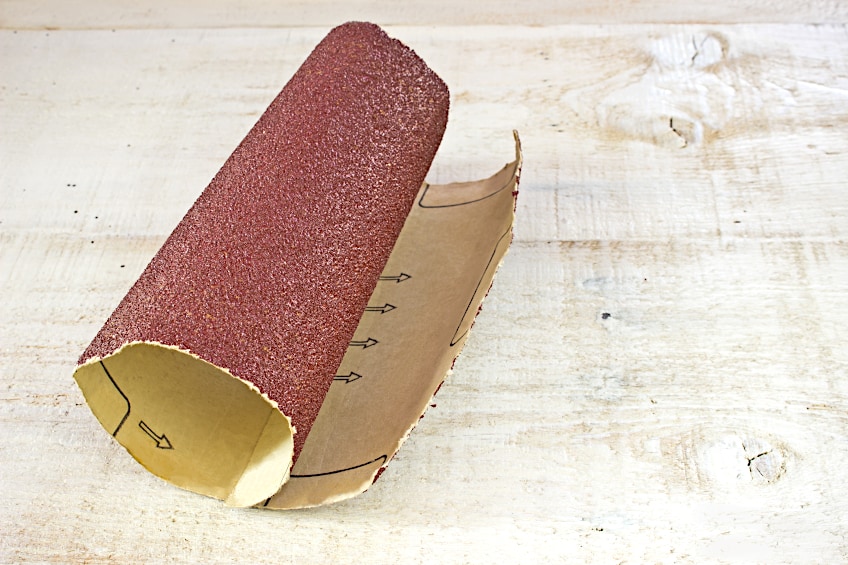
Because the granules are sorted by size and adhered to their respective paper backings, you are left with very rough feeling sandpaper and very smooth feeling sandpaper. The degree of roughness is what is referred to as grit, with low grit such as 120 grit sandpaper being very rough, and higher grit sandpaper such as 160 grit being smoother. The higher the grit the smoother the sandpaper and vice versa.
CAMI and FEPA Measurement Scales
In the United States, the Coated Abrasive Manufacturers Institute (CAMI) determines the grit of sandpaper based on the gradation scale. Many countries have adopted this manner of distinguishing one sandpaper grit from another, which is why we now refer to sandpaper from 120 grit to 200 grit almost universally.
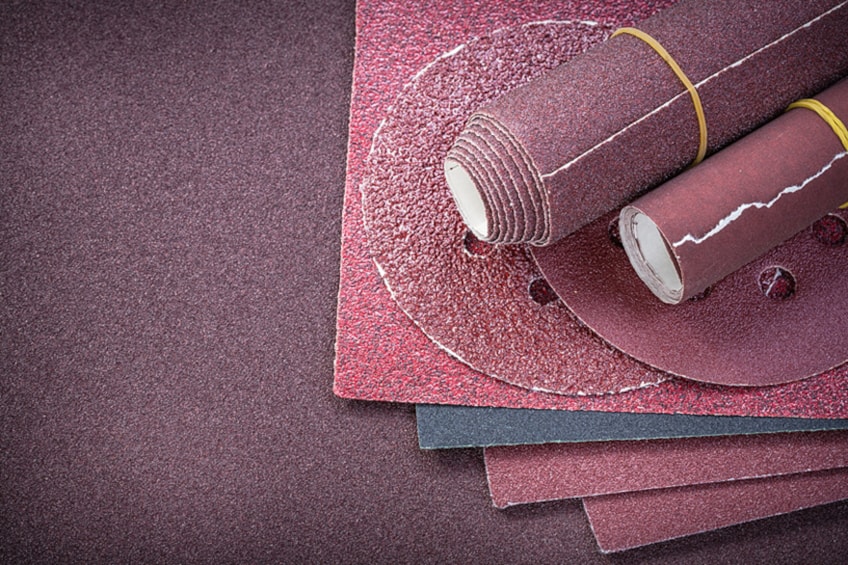
The actual measurement that is used to establish the grit of a given piece of sandpaper is called “microns”. This measurement is used to determine the size and/or thickness of particularly small substances, and is even used to determine the thickness of paint when spraying commercial airliners and space crafts!
While most retailers will follow the US CAMI scale, if you’re buying your sandpaper online you might come across a different measurement system known as the Federation of the European Producers of Abrasives (FEPA). While you should be able to identify sandpaper sizes listed on this scale pretty easily, watch out for the “P” before their grit numbers if you’re unsure.
These measurements don’t really translate 1:1 so below you’ll find a small conversion table showing you the CAMI to FEPA measurements. If you do happen to run across FEPA measurements in-store, it’s best to simply ask the store advisor if you’re unsure instead of ending up with the incorrect sandpaper for your application.
| CAMI | FEPA |
| 40 | P-36 and P-40 |
| 80 | P-80 and P-100 |
| 100 | P-100 and P-120 |
| 120 | P-120 and P-140 |
| 220 | P-180 and P-220 |
| 400 | P-600 and P-800 |
Choosing the Right Sandpaper for the Job
While you could use any grit of sandpaper to resurface your workpiece you can achieve a much better finish by choosing the right one for your workpiece and the type of texture you’d like to end up with. The best way to go about this is to ensure that you know what type of wood you’re working with and the type of finish your sandpaper will produce once used.

If you’re working off a set of instructions it will often call for a specific coarseness of sandpaper for the job. It is important to adhere to these instructions especially if you’ve been instructed to use a specific type of wood, as failing to do so could result in a surface texture that is too rough or too smooth, which means you have to re-sand the surface.
Extremely Coarse Sandpaper
Extremely coarse sandpaper is defined as any sandpaper between 24 grit and 36 grit. These sandpapers are extremely coarse and are generally used to remove surface coatings that have been attached to a wood’s surface for a very long time. They aren’t particularly good at smoothing a surface out, so you might want to avoid these if your intention is to refinish your workpiece.
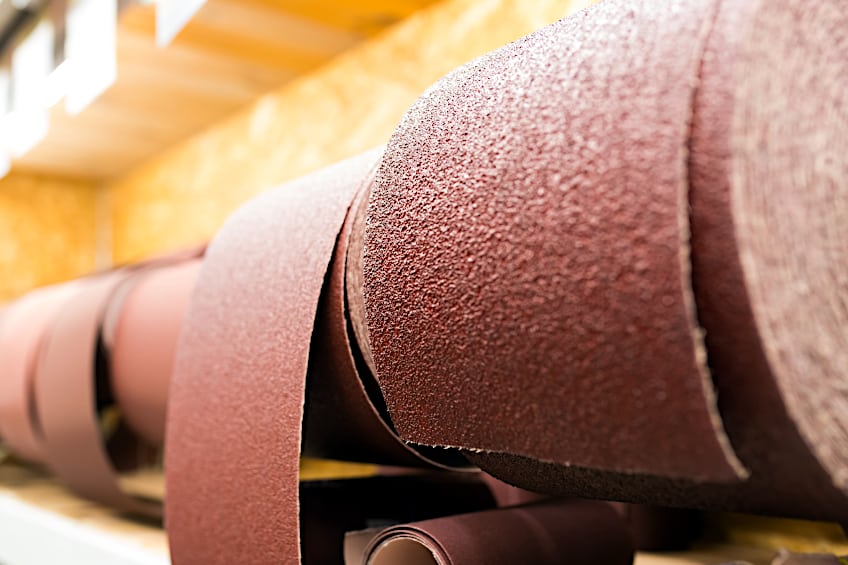
If you’re wondering what grit sandpaper to use for wood floors or workpieces that have been painted for years on end, then this might be just what you’re looking for. Essentially, this is the type of sandpaper you would use if you don’t have a power sander available and your job is particularly tough to do. Attempting to use these sandpaper grits for smoothing a workpiece could result in damage to the surface, especially if your wood is particularly tough.
Coarse Sandpaper
Coarse sandpaper can be defined as any sandpaper within the range of 40-50 grit. While extremely coarse sandpaper is used exclusively to remove surface coatings, coarse sandpaper can be used to remove surface coatings and to shape your workpiece. This grit is a good halfway point if your surface isn’t super tough, but still needs rough sandpaper for the job.
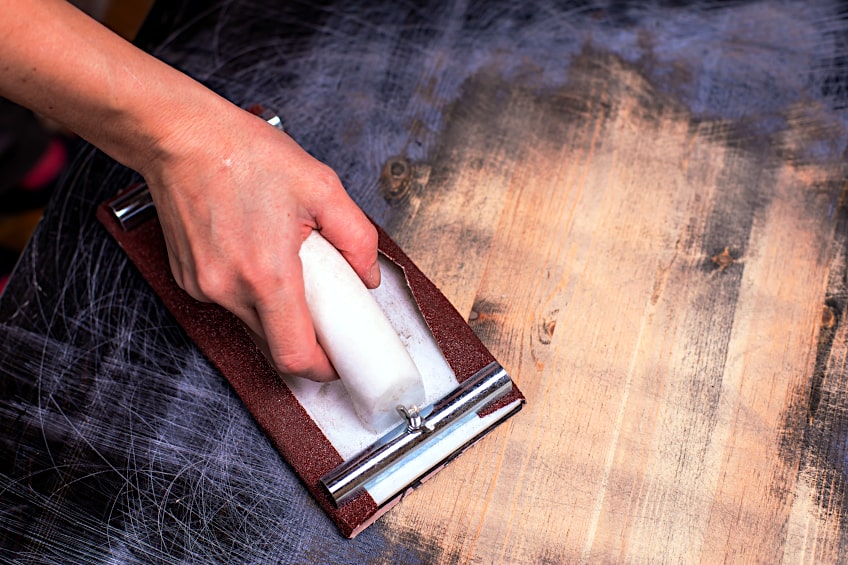
If you are considering reshaping your workpiece with this sandpaper you should go into it knowing that it can be quite labor intensive, which is why most crafters simply use a power sandpaper, but if you don’t have a power sander available to you, it’s still very much doable if you have a can-do attitude and don’t mind the process taking a bit longer.
Medium Sandpaper
Medium sandpaper can be defined as any sandpaper between 60-100 grit. This sandpaper is slightly smoother compared to coarse sandpaper, and it is actually used in conjunction with it when shaping a workpiece. While coarse sandpaper can be used for removing surface coatings and rough shaping a workpiece, medium sandpaper is used to sharpen the shape and smooth the surface out a bit.
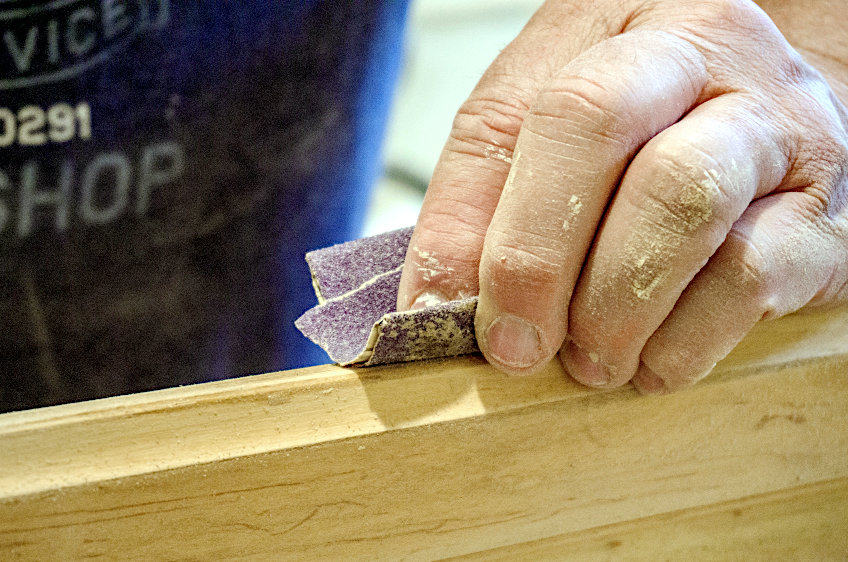
Additionally, medium grit sandpaper can also be used to remove any planning marks and ensure that your workpiece isn’t too rough before smoother grits of sandpaper are used. It essentially functions as a transitional sandpaper, facilitating the change from resurfacing and shaping to the finishing process. Using this sandpaper can also be a bit labor-intensive when working on larger projects. If you’re wondering what sandpaper to use on wood before painting, this is the stuff!
Fine Sandpaper
Fine sandpaper can be defined as any sandpaper between 120-220 grit. If you aren’t a professional woodworker and dabble in some DIY or recreational crafting every once in a while, then this is probably the sandpaper for you. This sandpaper is almost exclusively used for smoothing out slightly rough surfaces, with each grit between the aforementioned grit range used to progressively make the surface smoother and smoother.
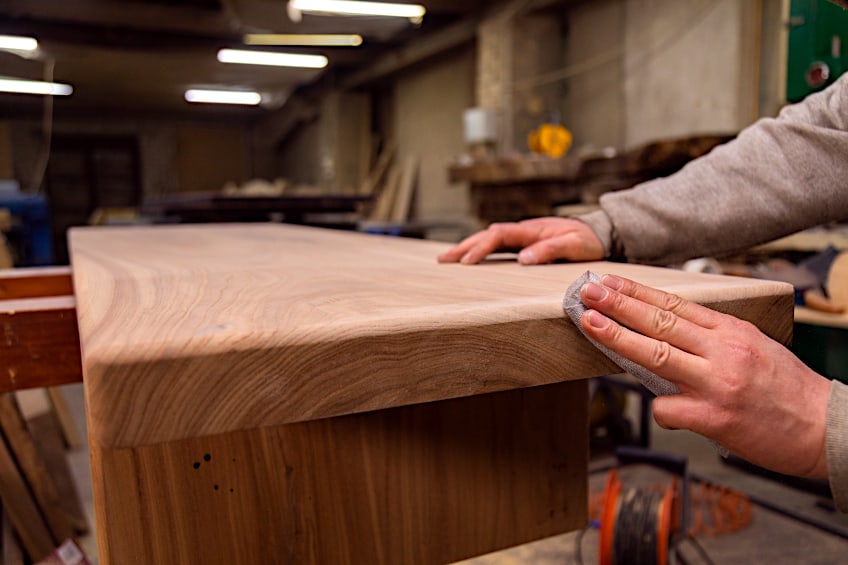
If you’re wondering what grit sandpaper to use for wood furniture or any other wood crafting project this would be the one to go with. They can be used to both smooth the wood or to prepare it for finishing products like paint, varnish, wood oil, and even epoxy resin. This is arguably the most used sandpaper grit of all that we’ve covered so far.
Extremely Fine Sandpaper
Extremely fine sandpaper can be defined as sandpaper between 240, 320, and 400 grit. This grit of sandpaper produces an extremely fine finish and is generally used to finish a workpiece off once fine sandpaper has been used. If you don’t intend to use a wood finishing product like varnish or tung oil, this grit would be the best way to achieve that smooth, natural look.
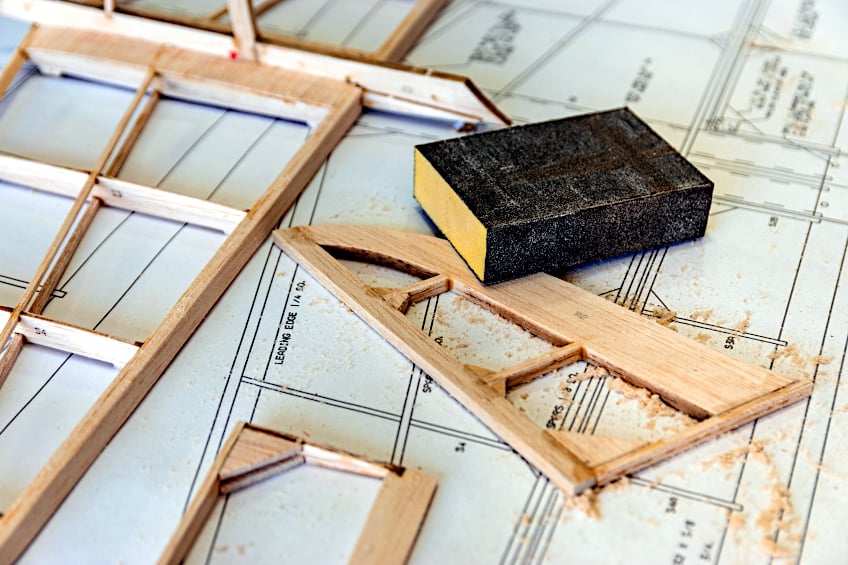
If you’re wondering what grit of sandpaper to use for wood artwork or antique restorations, this is the stuff you should be using. Funny enough, this isn’t the finest grit of sandpaper available to you. Even though they are primarily used for polishing surfaces, there are sandpaper types out there that are fine as 600 grit! They are super fine and don’t have many purposes when resurfacing wood.
How to Use Sandpaper
As we mentioned previously, sanding the surface of your workpiece is extremely important. However, it’s easy to get carried away if you don’t have any experience, so we thought we’d put together a short guide detailing how to use sandpaper effectively. Remember that the more you practice, the better you’ll become!
Start With a Rough Grit
When sanding the surface of your workpiece you should always start off with a rough grit. This will remove the existing surface coating or the conditioned layer of wood, allowing you to smooth it out progressively as you go on. Whether you use actual sandpaper or a sanding block is up to you, so choose one based on your comfort and what best suits your workpiece.
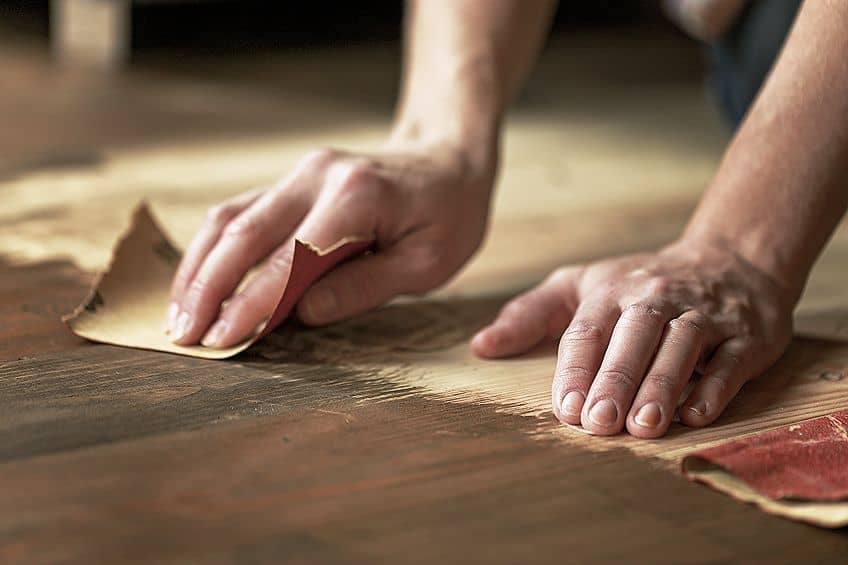
Out of all the sandpaper grits for wood, rough grit sandpaper is probably the most used. How do you use it though? All that you need to do is place your sandpaper in contact with your board surface and place both hands on the paper. Next, apply pressure to the sandpaper and force it along the surface of the board, moving it back and forth from one end of the board to the other.
The trick is not to apply too much pressure, and more importantly, to apply consistent pressure throughout the process. Once you’ve gotten a hang of the rhythm, ensure you are sanding in the same direction as the grain of the wood. Not only is this easier, but attempting to do the opposite will make your workpiece’s finish look uneven.
If your workpiece is large, try sanding it section by section, ensuring that you blend the areas that are parallel to one another. Once you’re done with the surface of your workpiece, don’t forget to tackle the edges. Remember that the goal here is to sand the entire surface to ensure it’s as flush as possible before you apply a finish.
Clean Up the Wood Particles
Cleaning up wood particles is an important part of the sanding process, especially if you will progressively sand your workpiece smoother with different grains of sandpaper. That being said, if you still have wood practices present on the surface of your workpiece, you should do your best to clean them up, and maybe clean up your surrounding workspace too.
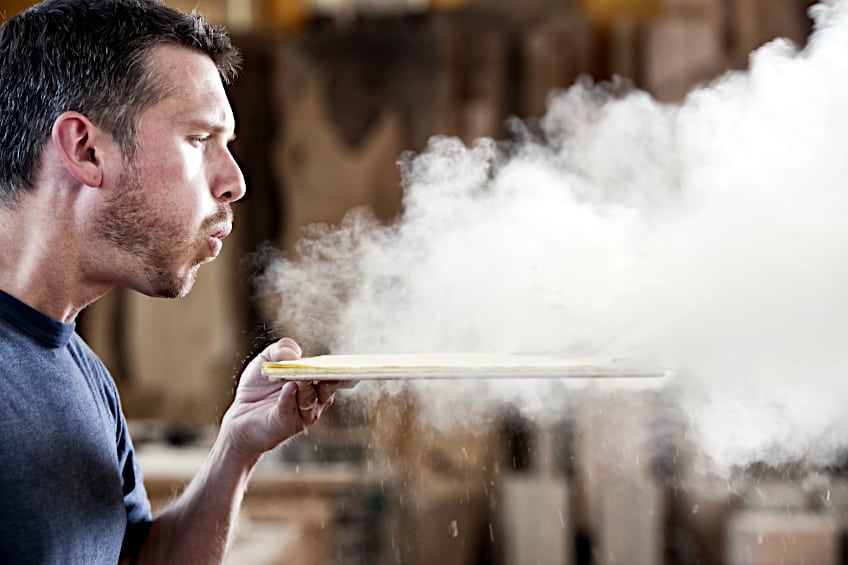
How do you ensure the surface of your workpiece is clean though? The best way to go about this is to use a handheld vacuum cleaner, a clean cloth, or some compressed air. There are pros and cons to each one, but they should ensure that your surface is clean before moving on to the next step of the process.
Use Medium Grit Sandpaper
Now that you have prepared the surface using your rough grit sandpaper and cleaned up all of the wood particles on the surface, it’s time to smooth your surface out a bit more. For this, you will use medium grit sandpaper. Medium grit sandpaper, as we mentioned previously, is used to both smoothen out the surface of workpieces and shape it to a degree.

Just as you did with the rougher sandpaper, place your sandpaper in contact with the wood using two hands and move it back and forth as you did previously. It should require much less force this time, so instead, you can focus on the back-and-forth motion to ensure that the entire surface is as smooth and even as possible.
Again, ensure that you tackle the edges as well. The last thing you want is for your edges to be a different texture from the primary surface. As you did previously, ensure that you clean the surface of your board of all wood particles once you’re done so that it is ready for the next round of sanding.
Use Fine Grit Sandpaper
If you’re wondering what grit sandpaper to use before staining, this is it. You can also use it between coats of wood stain. Using fine-grit sandpaper is easy and can be done with one hand if you feel comfortable with doing so. As you did previously, following the grain of the wood, applying even and consistent pressure throughout the process.
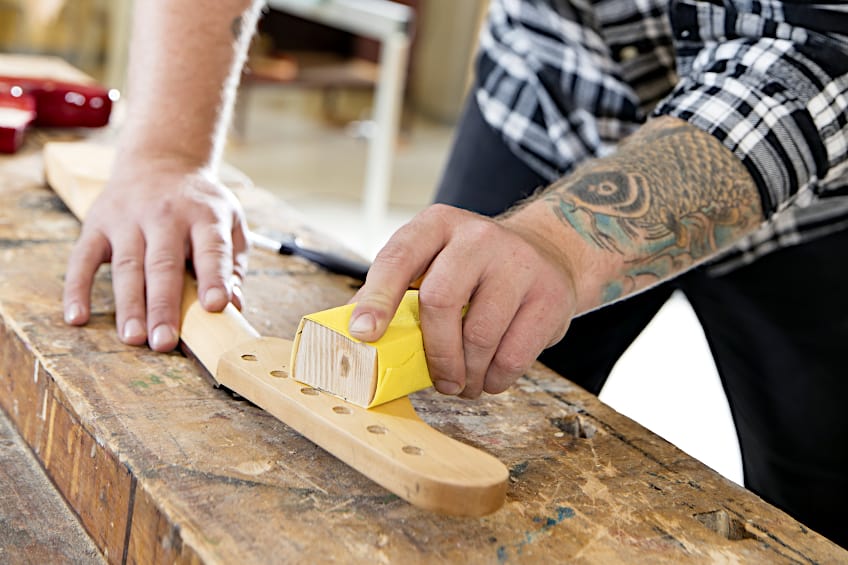
Again, don’t forget the edges of the wood, and repeat the process until you are satisfied with the condition of your surface. Once you’re done, clean the surface of your workpiece of all wood particles using the aforementioned methods before applying the finish of your choice, whether it be paint, stain, varnish, or a sealer like epoxy.
Now that you know what sandpaper is, what the grit of sandpaper means, what their respective intended functions are, how they differ from one another, and how to use them, it’s time for you to get out there and put your newfound knowledge to the test! Remember to always ensure that your workspace is well-ventilated and that you have the right sandpaper for the job.
Frequently Asked Questions
What Sandpaper Should You Use Before Staining?
Are you wondering what grit sandpaper to use before staining? Well, the more open the pores of your wood, the better. Using medium grit sandpaper, and then progressing to finer grit sandpaper before applying your stain, should make for an even and smooth stain when applied.
What Sandpaper Should You Use Before Painting?
If you’re thinking about what sandpaper to use on wood before painting, the best choice would be medium grit. Regardless of the wood type, this should allow you to expose fresh wood particles for the paint to bond with.
Why Are There Different Sandpaper Grits for Wood?
If you find yourself asking why there are different sandpaper grits for wood, it’s simply to achieve different degrees of smoothness. The higher the grit number, the smoother the surface of the wood will be once the sandpaper has been used.
What Sandpaper Should You Use for Wood Flooring?
If you are wondering what sandpaper to use for wood flooring, you’re not the first person and you probably won’t be the last. The best course of action is to use a rough grit sandpaper followed by a fine grit sandpaper. Knowing what sandpaper to use for wood surfaces can mean the difference between a good finish and a poor one.

I have been into woodworking since 2005 and woodturning since 2011. Because of my love for wood and woodworking, I started woodhappen.com to teach other enthusiasts about how to finish and seal wood, the best woodworking tools, the different types of wood, and everything else related to woodworking! Read more about me here.

